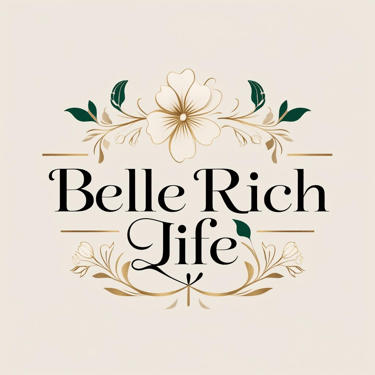The Evolution and Future of Women's Workwear Wardrobe: Global Trends, Seasonal Styles & Budget Tips
The women's workwear wardrobe has undergone a remarkable transformation over the decades, reflecting broader societal shifts in gender roles, workplace dynamics, and fashion sensibilities. Today's professional attire represents more than just clothing—it's a powerful expression of personal branding, cultural values, and workplace evolution. As boundaries between office and remote work continue to blur, understanding how to build a versatile, appropriate, and stylish workwear collection has never been more relevant.
In this comprehensive guide, we'll explore the fascinating journey of women's professional attire through history, examine current global trends across different regions and age groups, and look ahead to the future of workwear in an increasingly digital and flexible work environment. Whether you're building your first professional wardrobe or refreshing your existing collection, we'll provide practical insights for every season and budget.
The Historical Evolution of Women's Workwear
Women's professional attire has evolved dramatically over the past century, reflecting changing roles in the workplace and broader societal shifts. Each era brought distinctive styles that continue to influence today's workwear trends.
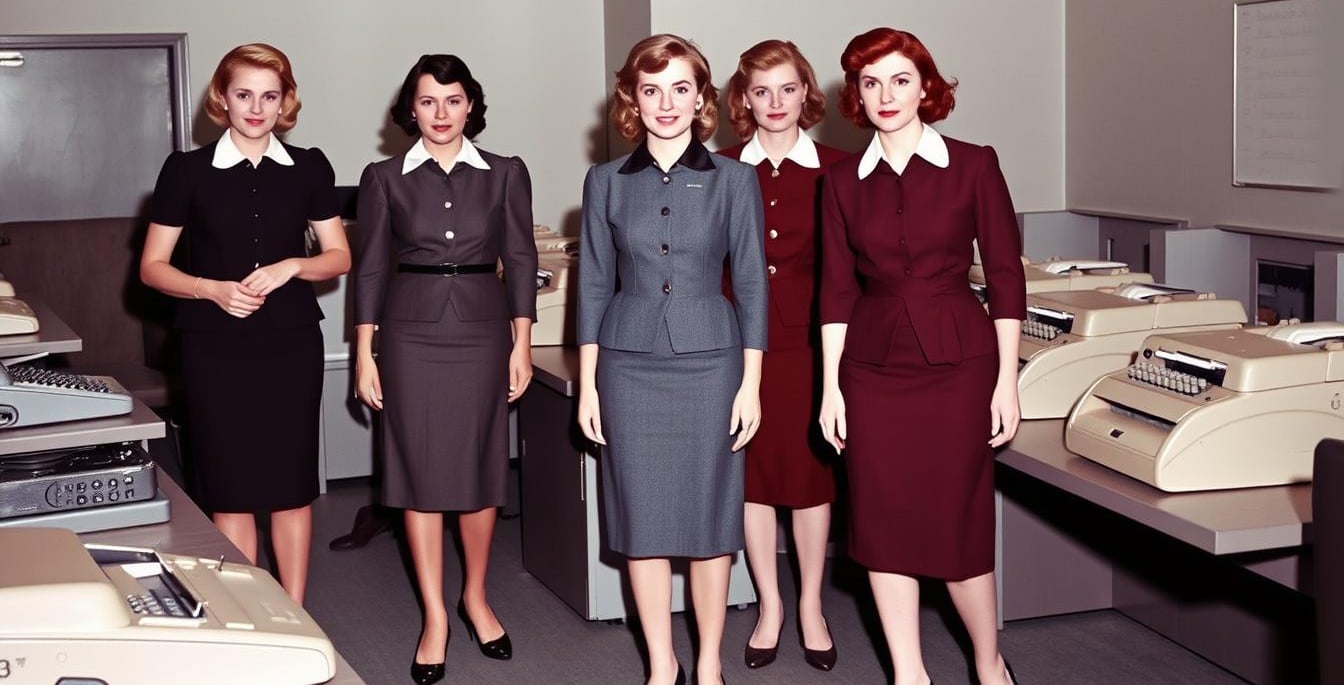

1950s-1960s: The Era of Formality
The post-war period saw women entering the workforce in growing numbers, though primarily in secretarial and support roles. Workwear reflected the strict gender norms of the time: tailored skirt suits with nipped waists, modest hemlines, and coordinated accessories. Colors remained conservative, with navy, black, and gray dominating the professional palette.
1950s: The era of tailored skirt suits, modest hemlines, and feminine silhouettes
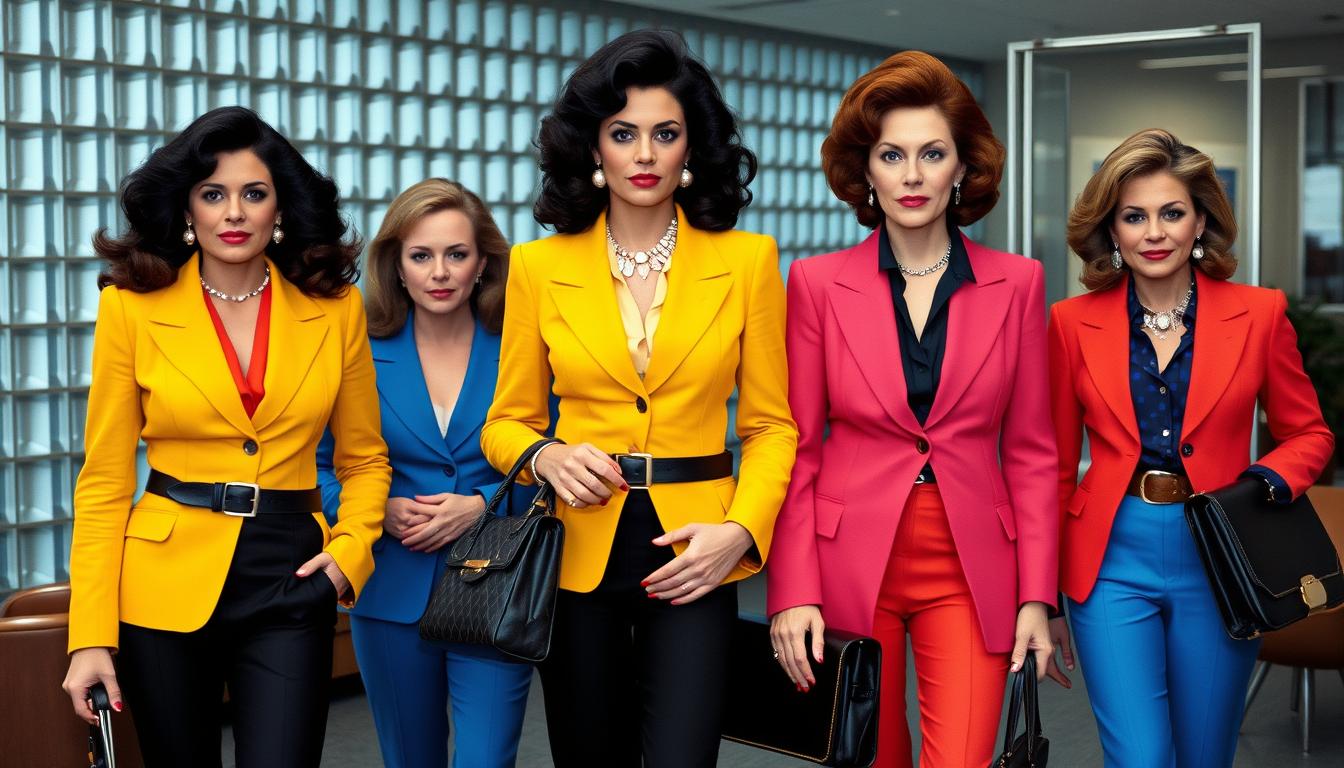

.1980s: Power dressing with bold shoulder pads and statement suits emerged as women climbed the corporate ladder
1980s: The Power Suit Revolution
As women began breaking glass ceilings in corporate America, the power suit became their armor. Characterized by bold shoulder pads, boxy silhouettes, and statement accessories, this era embraced a "dress for success" mentality. The iconic look, popularized by films like "Working Girl," represented women's determination to command respect in male-dominated environments.


2010s: The rise of business casual and athleisure influences in professional settings
2010s: The Comfort Revolution
The tech industry's rise brought a more casual approach to workwear, with Silicon Valley's influence spreading across sectors. Athleisure elements began appearing in professional wardrobes, with stretchy fabrics, comfortable silhouettes, and even sneakers becoming acceptable in many offices. This era prioritized versatility and comfort without sacrificing style.
Current Workwear Trends by Region & Age
Today's professional attire varies significantly across geographical regions and generations, reflecting diverse cultural values, climate considerations, and generational attitudes toward work and self-expression.
Regional Workwear Differences
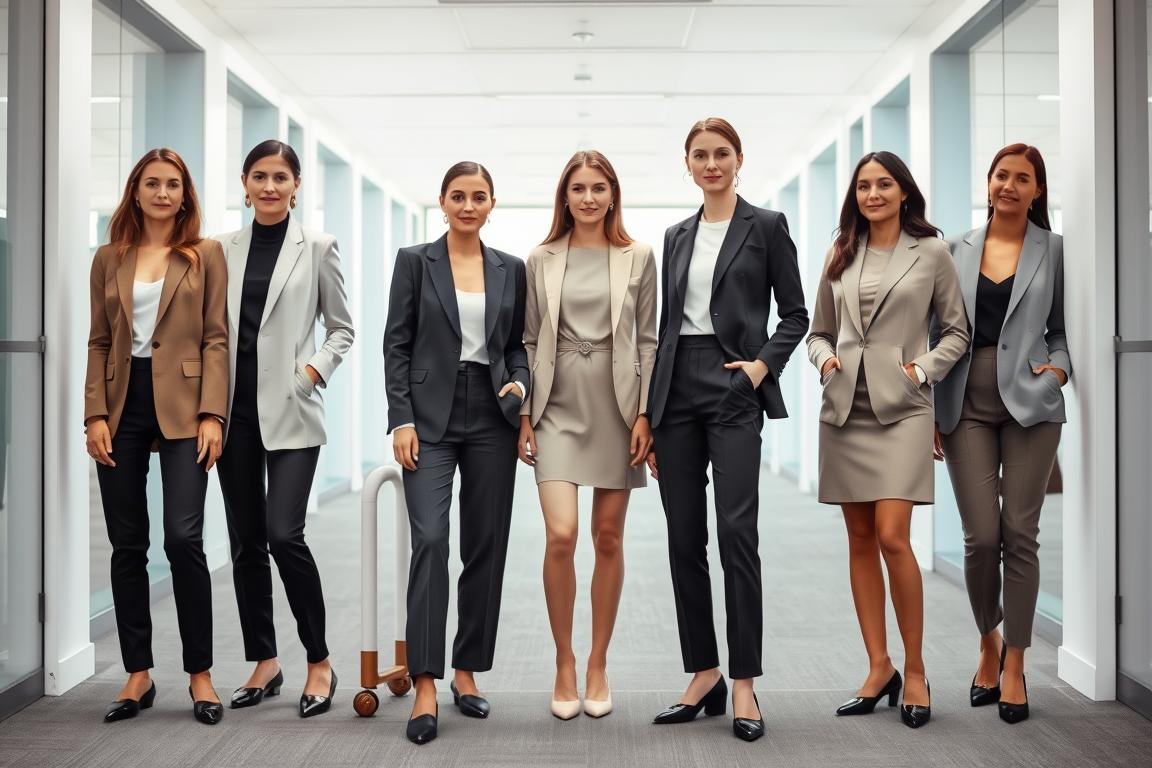

North America
American workwear embraces practical minimalism with a focus on versatile pieces that transition from office to evening. The "smart casual" approach dominates many industries, with tailored pants, simple blazers, and shift dresses in neutral palettes forming the foundation of most professional wardrobes.
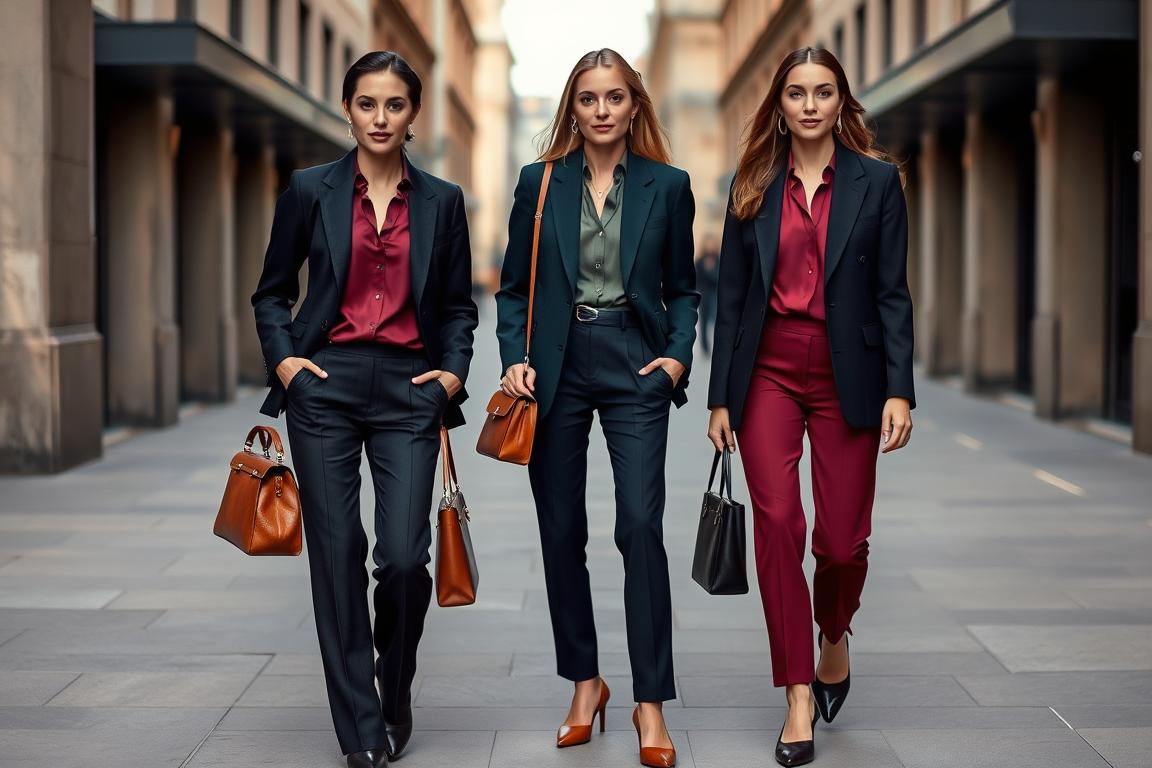

Europe
European professional attire emphasizes quality over quantity, with impeccable tailoring and fine fabrics taking precedence. French workwear embraces the "less is more" philosophy with perfectly cut basics, while Italian professionals often incorporate bold colors and statement accessories into their office ensembles.
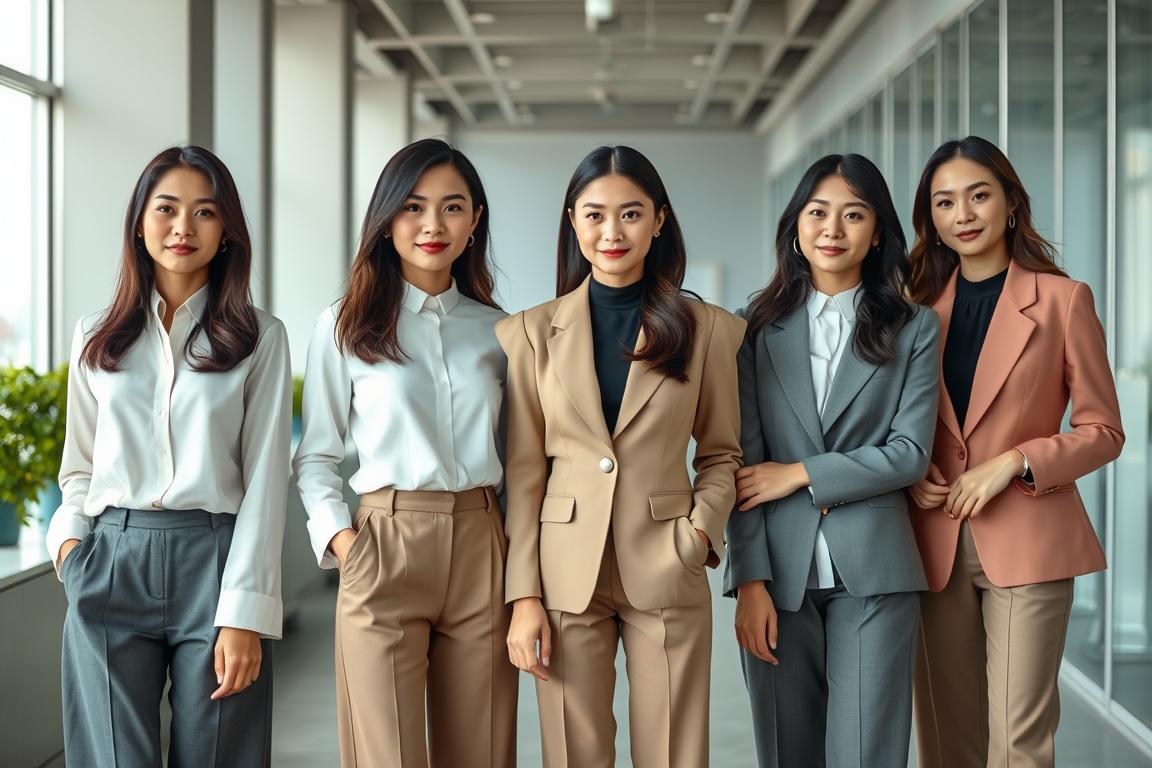

Asia
Asian workwear often balances modesty with trend-consciousness. In Japan, formal business attire remains the norm in traditional industries, while South Korean professionals embrace feminine silhouettes with modern details. Throughout the region, modest necklines and hemlines coexist with fashion-forward elements.
Age-Based Workwear Preferences
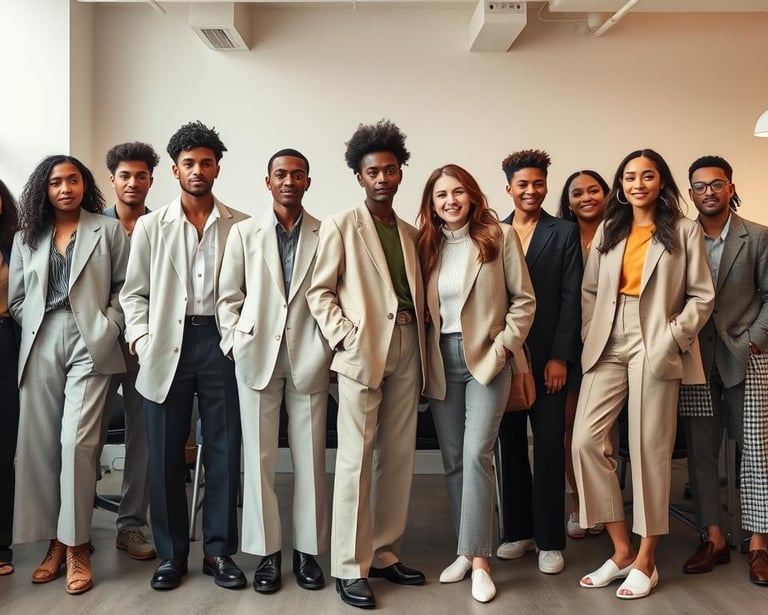





Gen Z (Born 1997-2012)
The youngest workforce generation prioritizes sustainability and self-expression in their workwear choices. Gender-neutral cuts, vintage-inspired pieces, and brands with transparent ethical practices dominate their professional wardrobes. Comfort is non-negotiable, with rigid dress codes often seen as outdated.
Millennials (Born 1981-1996)
Millennials seek versatility above all, investing in pieces that transition seamlessly between work, social events, and travel. This generation popularized the "high-low mix" approach, pairing investment pieces with affordable basics. Their workwear often incorporates personal touches that express individuality while maintaining professionalism.
Gen X (Born 1965-1980)
Gen X professionals often gravitate toward refined classics with modern updates. Having witnessed multiple workplace style evolutions, this generation typically invests in quality staples while selectively incorporating trends. Their workwear wardrobes tend to be well-edited collections of versatile, long-lasting pieces.
Find Your Perfect Workwear Style
Discover curated collections that match your regional and generational style preferences. From European-inspired tailoring to sustainable Gen Z favorites, find pieces that reflect your unique professional identity.
The Future of Women's Workwear
As workplace norms continue to evolve, particularly in the wake of remote and hybrid work models, women's professional attire is undergoing another significant transformation. Several key trends are shaping the future of workwear.


The future of workwear balances comfort with professionalism for hybrid work environments
Comfort-First Design
The pandemic-era shift to remote work permanently altered expectations around comfort. Future workwear will increasingly incorporate stretch fabrics, elastic waistbands, and ergonomic designs without sacrificing professional appearance. Brands are already developing "zoom-appropriate" tops paired with comfortable bottoms for hybrid work environments.
Tech-Enhanced Fabrics
Technological innovation is revolutionizing workwear fabrics. Look for increased integration of wrinkle-resistant, stain-repellent, odor-controlling, and temperature-regulating materials. These performance features will be particularly valuable for business travelers and professionals with demanding schedules.
Sustainability as Standard
As younger generations gain purchasing power, sustainable production will shift from a selling point to a baseline expectation. Future workwear will increasingly feature recycled materials, biodegradable components, and transparent supply chains. Rental services and capsule collections will continue gaining popularity as alternatives to fast fashion consumption.
"The future of workwear isn't about choosing between comfort and professionalism—it's about demanding both. Tomorrow's professional wardrobe will be versatile, sustainable, and designed for the realities of modern work."
— Emma Spedding, Fashion Editor
Seasonal Workwear Guide
Building a year-round professional wardrobe requires strategic planning for changing weather conditions while maintaining a cohesive style. Here's how to adapt your workwear for each season without sacrificing comfort or professionalism.
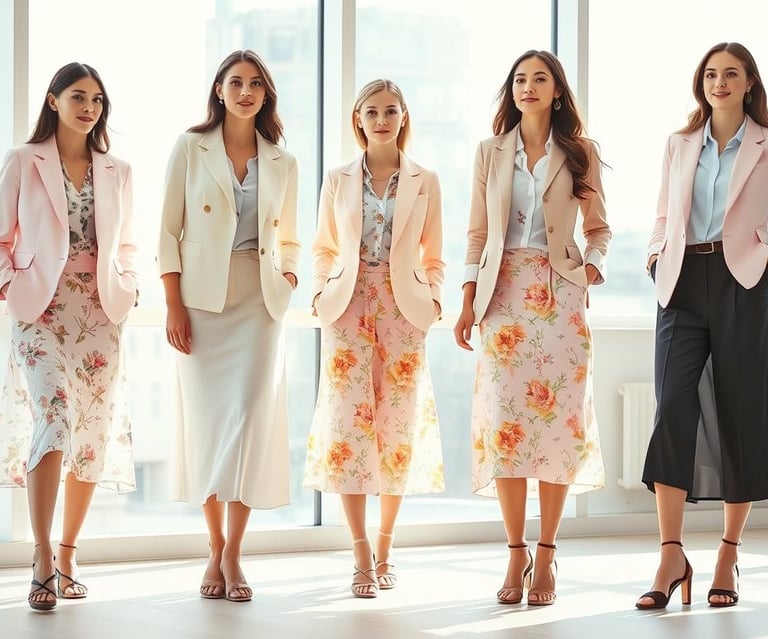

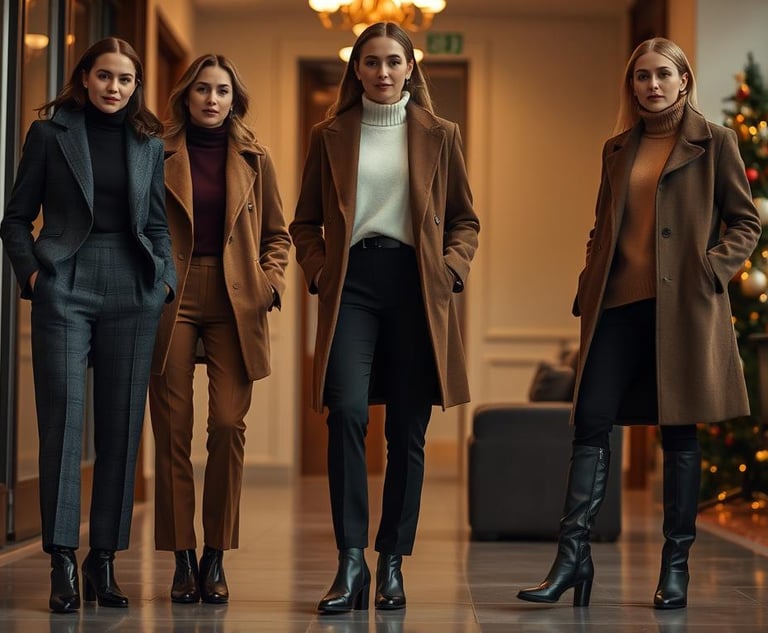

Spring/Summer Workwear Essentials
Lightweight blazers in breathable fabrics like linen blends
Midi skirts that offer coverage while keeping you cool
Short-sleeved blouses in wrinkle-resistant fabrics
Breathable dresses in A-line or shift silhouettes
Professional sandals or perforated leather flats
Light-colored suits in tropical wool or cotton blends
Opt for natural fabrics like cotton, linen, and silk blends that allow air circulation. Light colors not only reflect the season but also help keep you cooler in warm office environments.
Fall/Winter Workwear Essentials
Wool-blend trousers in classic cuts
Layering pieces like fine-knit turtlenecks and cardigans
Structured coats that maintain professionalism outdoors
Leather or suede boots with modest heels
Cashmere sweaters for warmth without bulk
Thermal underlayers that remain invisible beneath clothing
Layering is key for winter workwear, allowing you to adjust to varying indoor temperatures. Invest in quality outerwear that makes a statement while providing necessary warmth during commutes.
Transitional Season Tips
The most challenging periods are often the transitional weeks between seasons. Create versatility with these approaches
Winter to Spring Transition
Layer lightweight knits under winter blazers
Introduce spring colors while maintaining heavier fabrics
Swap boots for loafers or ballet flats
Begin incorporating lighter-weight trousers
Summer to Fall Transition
Add lightweight scarves to summer dresses
Layer thin cardigans over sleeveless tops
Introduce deeper colors while maintaining lighter fabrics
Transition from open-toe shoes to closed flats
Update Your Seasonal Workwear
Refresh your professional wardrobe with season-appropriate pieces that combine style, comfort, and versatility. Find quality staples that will carry you through changing weather with confidence.
Building a Workwear Wardrobe on Any Budget
Creating a professional wardrobe doesn't have to break the bank. With strategic planning and smart shopping, you can build a versatile collection of workwear pieces regardless of your budget constraints.
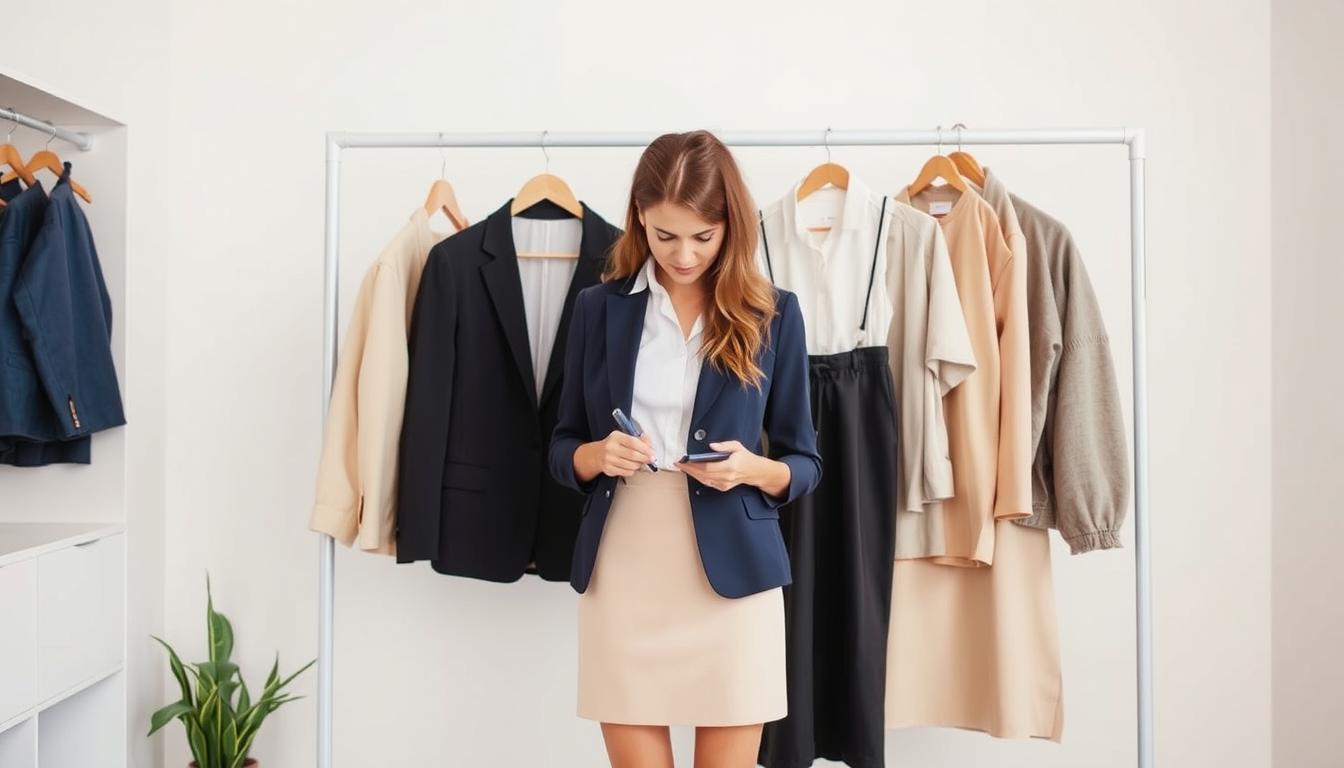

The Capsule Wardrobe Approach
A capsule wardrobe focuses on a limited number of high-quality, versatile pieces that can be mixed and matched to create numerous outfits. This approach reduces impulse purchases and maximizes the utility of each item.
Essential Capsule Workwear Pieces
1-2 well-fitted blazers in neutral colors
3-5 blouses or shirts in complementary colors
2-3 pairs of tailored trousers or skirts
1 versatile dress that can be styled multiple ways
2-3 pairs of comfortable, professional shoes
A few key accessories to vary your looks
Budget-Friendly Shopping Strategies
Investment Pieces vs. Trend Items
Allocate more of your budget to timeless pieces you'll wear frequently (blazers, trousers, quality shoes) and save on trend-driven items that will have shorter lifespans in your wardrobe. The "cost per wear" calculation helps determine where to invest.
Alternative Acquisition Methods
Consider clothing rental services for occasional needs, consignment shops for discounted designer pieces, and clothing swaps with similarly-sized colleagues. Many online platforms now offer pre-owned workwear in excellent condition at a fraction of retail prices.
Strategic Sale Shopping
Rather than impulse-buying during sales, maintain a wishlist of specific items your wardrobe needs and monitor for price drops. End-of-season sales are perfect for purchasing classic pieces that transcend seasonal trends.
Budget-Friendly Brands by Price Point
Budget Level Recommended Brands Best Items to Purchase
Entry-Level
($25-$75 per item) H&M, Uniqlo, ARKET, Zara Blouses, knit tops, seasonal trend pieces
Mid-Range
($75-$150 per item). COS, Madewell, Everlane, & Other Stories Trousers, dresses, quality cotton shirts
Investment
($150+ per item). Theory, Reformation, Eileen Fisher, M.M.LaFleur. Blazers, suits, leather shoes, outerwear
Find Quality Workwear on Any Budget
Discover affordable yet stylish workwear options that don't compromise on quality. From budget-friendly basics to investment pieces worth every penny, build a professional wardrobe that works as hard as you do.
Creating Your Signature Workwear Style
The evolution of women's workwear reflects broader societal changes in how we view professionalism, gender, and self-expression in the workplace. Today's professional has unprecedented freedom to create a workwear wardrobe that honors both workplace expectations and personal identity.
As you build or refine your own professional wardrobe, remember that the most successful approach balances several key factors:
Workplace Culture: Understand the written and unwritten dress codes in your specific industry and organization
Personal Comfort: Prioritize pieces that allow you to focus on your work without physical discomfort or self-consciousness
Authentic Expression: Find ways to incorporate elements that reflect your personality while maintaining professionalism
Practical Considerations: Account for your climate, commute, and daily activities when selecting workwear
Sustainability: Consider the environmental and ethical impact of your workwear choices.
The future of women's workwear wardrobe will continue evolving as workplace norms shift and fashion innovations emerge. By understanding historical context, current trends, and practical considerations, you can create a professional wardrobe that serves you well today while adapting to tomorrow's changing landscape.
Which workwear trend or approach resonates most with your personal style and professional needs? Are you drawn to the minimalist capsule wardrobe, sustainable fashion choices, or perhaps the comfort-first philosophy of post-pandemic workwear? Share your thoughts and experiences as we collectively redefine what it means to dress professionally in today's diverse workplace.
Home Beauty & Skincare Fashion & Style Jewelry & Watches Luxury Fragrances Home & LifestyleBlogs About Contact
eliel@bellerichlife.com
Contact us
© 2025. All rights reserved
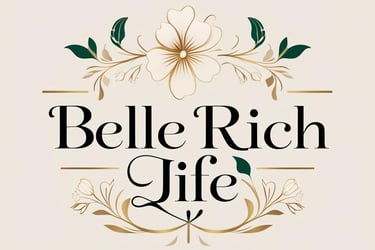

This blog may contain affiliate links, which means I might earn a small commission, at no extra cost to you, if you decide to make a booking through one of these links. I only recommend products and services I actually use or genuinely believe will bring value. For more information visit http://paidforadvertising.com. Thank you for your support!
Affiliate Disclosure
